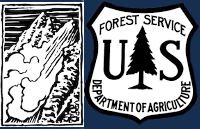Lionhead Range
Spring in the air, but still a winter snowpack
On this first day of spring, Ian and I toured up the northern ridge above Hebgen Lake today looking for weak snow near the base of the snowpack. Throughout the day, it snowed a little over an inch with bursts of sunshine in and out.
From the storm over the weekend, we noted about 1.5" of new and settled snow. We saw no cracking or collapsing or any other signs of instability.
We dug a snowpit at 8900' on a NE aspect (HS: 163), and while we found faceted snow at the bottom of the snowpit, beneath the dirt layer, we were only able to get propagation on this layer after extra hits. We got a few ECTN's (7, 17) higher up in the snowpack.
While we were encouraged by how few signs of instability we saw today, we are not ready to discount the possibility that avalanches could break on these weak layers, especially after seeing the persistent weak layer avalanche yesterday in the Taylor Fork. As always, if choosing to travel in steep terrain, use safe travel practices: one at a time on steep slopes, carry rescue gear, and regroup in safe zones.
Many Wind Slab Avalanches at Lionhead
We saw many R1-R2 wind slab avalanches below the Lionhead Ridge cornice line. Visibility was limited so I won't estimate the exact number, but nearly every time we had good views of the steep faces, we saw cornice collapses, debris, or small crown lines. There were two slides on east aspects that ran closer to full path and piled debris more deeply. I expect that most of these had run within the last 24 hours, but continuing snowfall and hurricane force winds made precisely dating these a challenge (many trees were blown down during the wind event, these too were already somewhat buried). None of the avalanches broke on persistent weak layers as far as I could tell.
Large chunks of debris from a natural avalanche in Targhee Creek. Photo: GNFAC
We saw many crowns of wind slab avalanches along Lionhead Ridge. Photo: GNFAC
Cornice collapse and small avalanche at the start of Lionhead Ridge. Photo: GNFAC
Many Wind Slab Avalanches at Lionhead
I rode into Lionhead head with Ryan, Aaron, and Omar on an avalanche warning day. We went straight to Ski Hill and dug a pit there. With better visibility than I anticipated we dropped down to Denny Creek, travelled up and around to the head of Targhee Creek before dropping down through Targhee and back to the vehicles. During the day ~6" of snow fell with moderate winds. Wind slabs were widespread as we rode, and the surface conditions had stiffened in many locations due to the effects of the strong to extreme winds.
We saw many R1-R2 wind slab avalanches below the cornice line. Visibility was limited so I won't estimate the exact number, but nearly every time we had good views of the steep faces, we saw cornice collapses, debris, or small crown lines. There were two slides on east aspects that ran closer to full path and piled debris more deeply. I expect that most of these had run within the last 24 hours, but continuing snowfall and hurricane force winds made precisely dating these a challenge (many trees were blown down during the wind event, these too were already somewhat buried). None of the avalanches broke on persistent weak layers as far as I could tell.
We dug at Ski Hill. Pit results were unremarkable with an extended column test breaking and propagating with an extracurricular ECTP32 on the January facets. The January weak layer was buried a meter deep and was 1 Finger Hardness and had gained strength. However, we wrapped around the corner on our decent and found a shallower slope (1m deep) where Fist Hard facets were capped by a dense wind slab. I did not perform an official ECT, we had undercut the slope with our sleds and were able to knock 5-foot-wide sections of slab off with an arm chop, triggering miniature avalanches that slid easily. This showed us what we needed to know--an avalanche on a steep slope with that structure was likely (see video).
